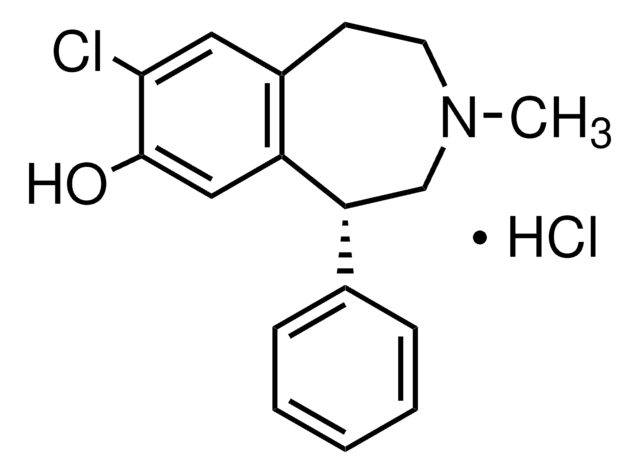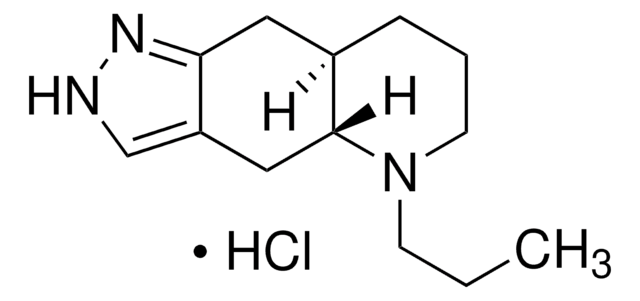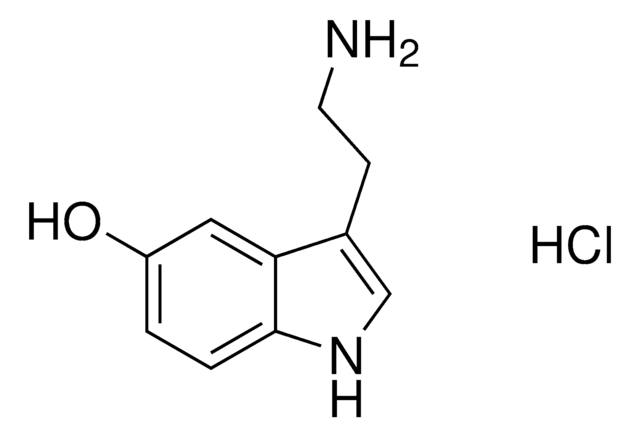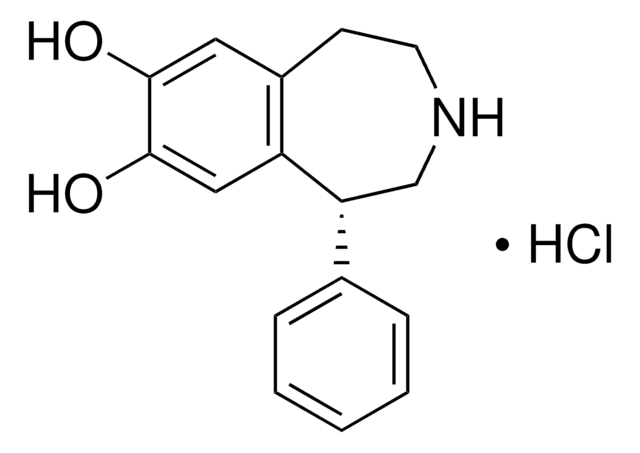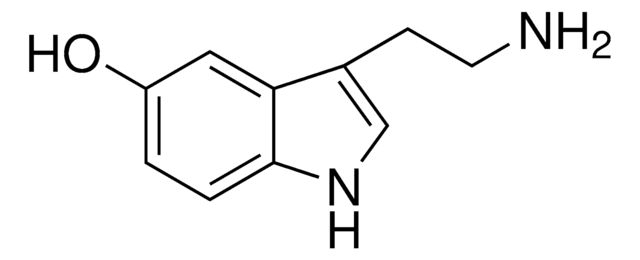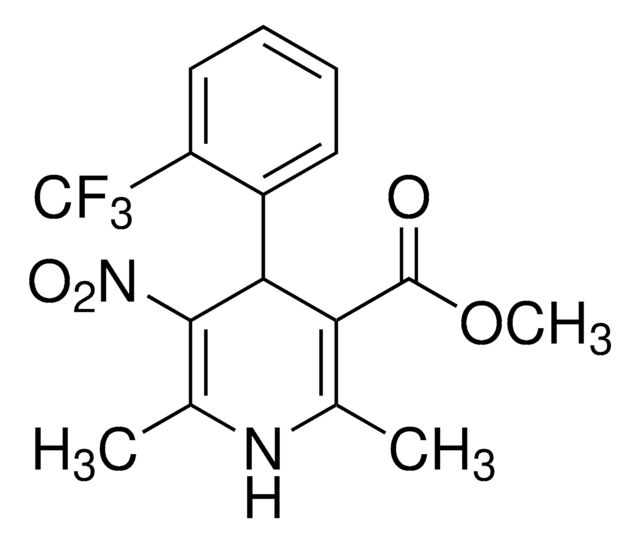推荐产品
质量水平
方案
≥98% (HPLC)
表单
crystalline
储存条件
desiccated
protect from light
颜色
white
溶解性
H2O: >5 mg/mL
aqueous base: soluble (unstable)
SMILES字符串
Cl.Oc1cc2CCNCC(c3ccccc3)c2cc1O
InChI
1S/C16H17NO2.ClH/c18-15-8-12-6-7-17-10-14(13(12)9-16(15)19)11-4-2-1-3-5-11;/h1-5,8-9,14,17-19H,6-7,10H2;1H
InChI key
YEWHJCLOUYPAOH-UHFFFAOYSA-N
基因信息
human ... DRD1(1812)
正在寻找类似产品? 访问 产品对比指南
应用
(±)-SKF-38393 hydrochloride has been used as a selective D1 receptor agonist as a part of dopaminergic treatment. It has also been used to study its effect on prolactin in male baboons.
生化/生理作用
(±)-SKF-38393 is a D1 dopamine receptor agonist. It is known to promote the production of glutamate in the hippocampus.
注意
This material is hygroscopic. Air-sensitive. Light-sensitive.
警示用语:
Warning
危险声明
危险分类
Eye Irrit. 2 - Skin Irrit. 2 - STOT SE 3
靶器官
Respiratory system
储存分类代码
11 - Combustible Solids
WGK
WGK 3
闪点(°F)
Not applicable
闪点(°C)
Not applicable
个人防护装备
dust mask type N95 (US), Eyeshields, Gloves
法规信息
新产品
历史批次信息供参考:
分析证书(COA)
Lot/Batch Number
Stimulation of dopamine D1 receptor improves learning capacity in cooperating cleaner fish
Messias JPM, et al.
Proc. Royal Soc. Lond. B., 283(1823), 20152272-20152272 (2016)
Prolactin and fMRI response to SKF38393 in the baboon
Miller B, et al.
PeerJ, 1(5), e195-e195 (2013)
Dopamine disruption increases cleanerfish cooperative investment in novel client partners
Soares MC, et al.
Royal Society open science, 4(5), 160609-160609 (2017)
The D1 dopamine receptor agonist SKF-38393 stimulates the release of glutamate in the hippocampus
Bouron A and Reuter H
Neuroscience, 94(4), 1063-1070 (1999)
David Kabelik et al.
Neuropharmacology, 58(1), 117-125 (2009-06-23)
Recent experiments demonstrate that aggressive competition for potential mates involves different neural mechanisms than does territorial, resident-intruder aggression. However, despite the obvious importance of mate competition aggression, we know little about its regulation. Immediate early gene experiments show that in
我们的科学家团队拥有各种研究领域经验,包括生命科学、材料科学、化学合成、色谱、分析及许多其他领域.
联系技术服务部门